2025 Author: Priscilla Miln | [email protected]. Last modified: 2025-01-22 17:55:13
Fish of the Characin family can be considered real pearls of aquariums. For example, it is to this group that the handsome neon and beloved by many piranhas belong. Aquarium characin fish are valued not only in Russia, but also in other countries of the world. Abroad, such inhabitants of aquariums are called tetras.
Where they live
In the wild, characin fish live mainly in the tropical waters of America and Africa. In most cases, aquarists today contain such representatives of the underwater fauna, whose ancestors were once caught in the rivers of the Amazon and adjacent areas. It is known that in the wild characin fish prefer the so-called black water. That is, they live in shallow water, where the water has a dark color due to fallen leaves and many snags.
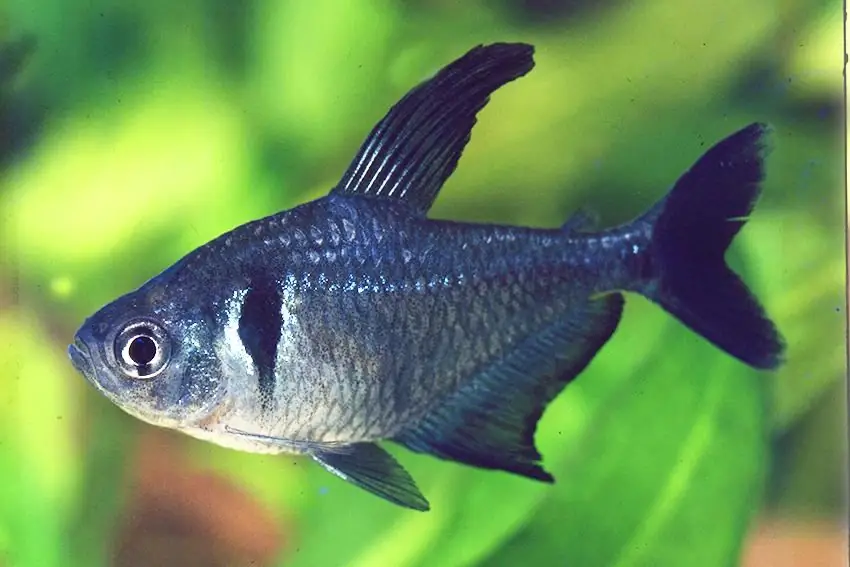
Distinguishing Features
At the moment, biologists know 12 subfamilies of characin fish, including 165 genera. The approximate number of varieties of such representatives of the fauna is, according to various sources, 900-1200. At the same time, about 400 species of such fish can be contained in aquariums.
Of course, aquarium characinsfish can have different colors, habits and food preferences. However, for the most part, representatives of this family are characterized by the following common features:
- small sizes;
- bright color;
- packing behavior.
The bright colors of these fish are needed so that relatives can find and recognize each other in dark water. Among other things, the adipose fin, located behind the dorsal on the caudal peduncle, distinguishes the characins from other types of aquarium inhabitants, among other things.
Characin fish usually become sexually mature at 6-12 months. At the same time, the life span of most representatives of the suborder does not exceed 3-5 years. Male characins are usually brighter colored than females. At the same time, they look more slender and spectacular due to their lush fins.
These interesting fish lay eggs in summer. At the same time, their spawning lasts quite a long time.
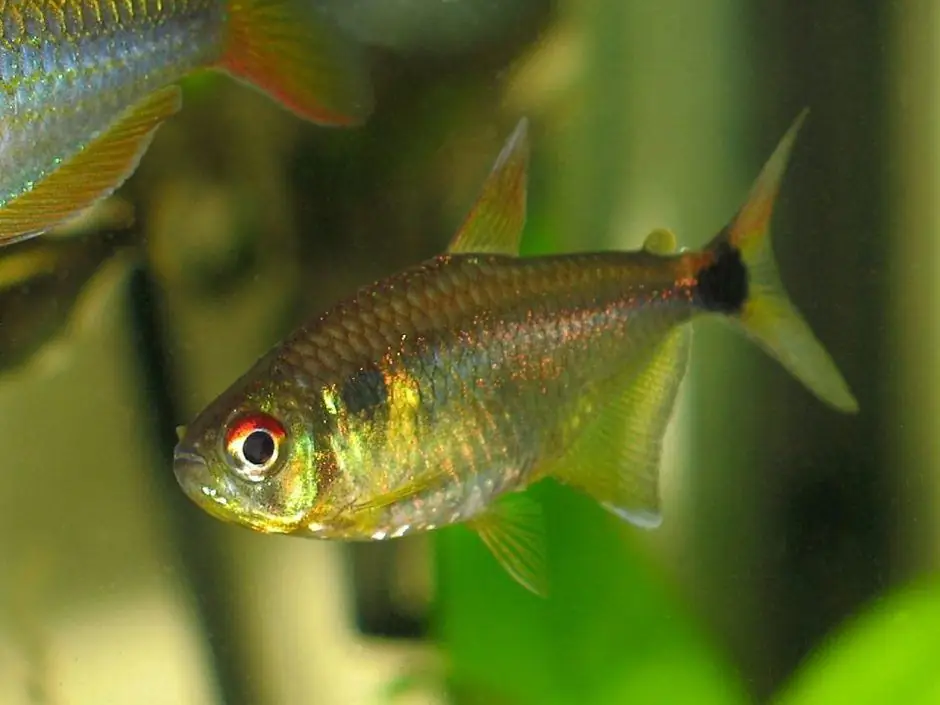
The brightest representatives
In addition to red, black and blue neon, as well as piranhas, quite often in aquariums, amateurs and professionals contain such characins as:
- Diamond tetras that are yellowish in color and covered with iridescent spots in the light.
- Erythrosonus - aquarium fish with a peaceful character, similar to black neon.
- Red and black phantoms - peaceful fish with a translucent body.
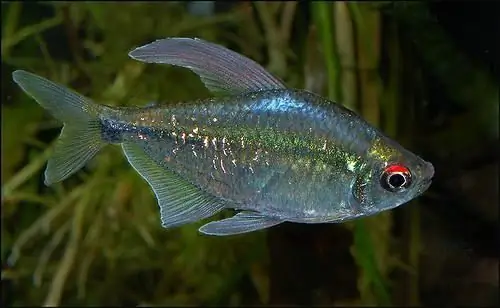
Also popular withaquarists representatives of the haracin order are minors, lanterns, congo, filomena. Of course, thorns can also be considered very interesting underwater inhabitants of this group. In the aquarium, such schooling fish, which have black stripes on their sides, look no worse than barbs and at the same time have a much calmer character.
Another popular representative of the haracins among aquarists are ornatus. In body shape, these fish are similar to thorns and phantoms. There may be several types of ornatus in aquariums:
- Ornathus vulgaris;
- pink;
- whitefin;
- black;
- red;
- red dot.
Content Features: Aquarium Selection
For the most part, characins are considered very unpretentious fish. Both experienced aquarists and beginners can keep such representatives of aquatic fauna. These fish quickly adapt to any conditions.
An aquarist who decides to purchase just such fish will first need to decide on the size of the aquarium, water parameters and plants used for planting. The capacity of the container for keeping haracins is chosen, of course, taking into account the size of a particular variety of such fish.
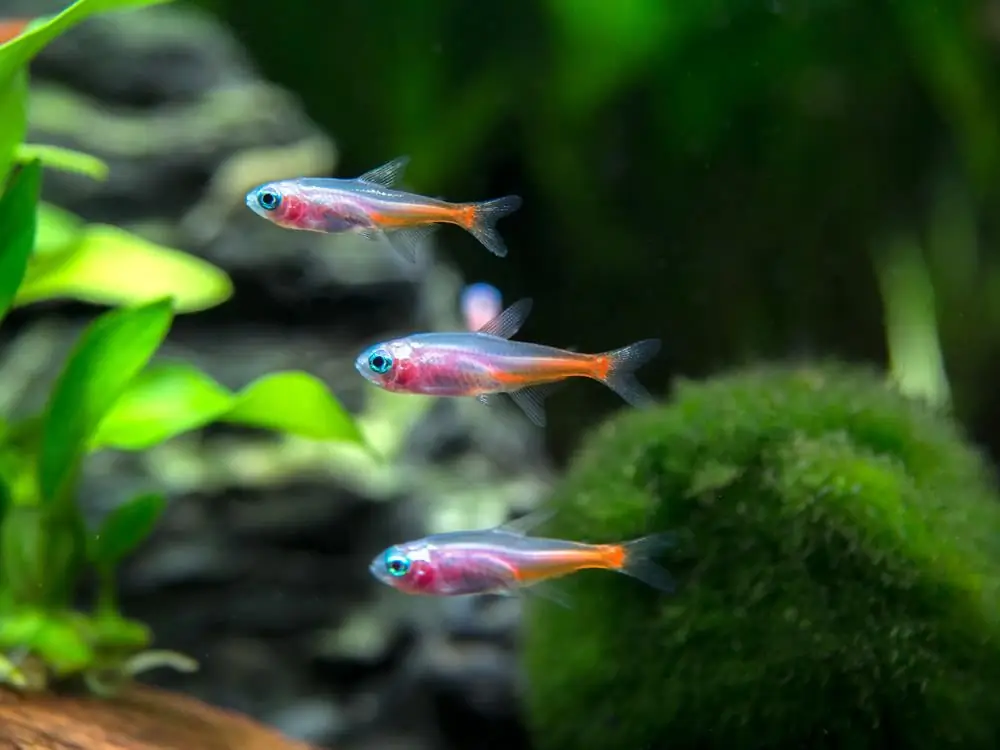
For tetras, minors, thorns and lanterns, a small aquarium is quite suitable. To keep such fish, you can purchase a container of 50 liters or more. For fast reds, blacks, blues or greensneon or large piranhas, of course, it is worth buying a larger aquarium. In any case, an aquarium for characins should be purchased based on the fact that for each such fish with a body length of not more than 5 cm, 10 liters of water are needed.
Water parameters
Because in the wild the characins live in shallow waters in the tropics, the habitat for them will have to be created quite warm. The optimum temperature for keeping such fish is 24 ° C. At the same time, the acidity of the water in an aquarium with tetras, minors and flashlights should be approximately 6-7 pH. The optimal hardness indicator is 18 dGH.
Experienced fish lovers recommend changing the water in the aquarium in characins once a week. At the same time, about 1/5 of its volume should be drained from the container. In the aquarium, it is imperative, among other things, to install a filter. Additionally, if desired, you can use a compressor. Lighting for aquarium characin fish is most suitable diffused.
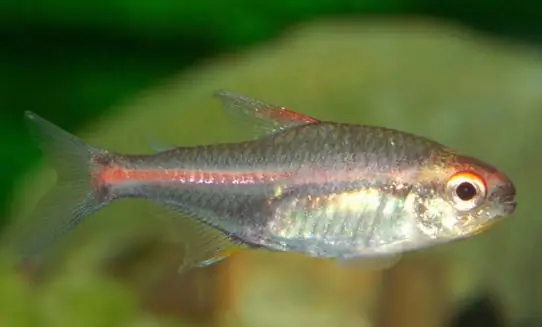
Plants
In the wild, in shallow water, characin fish swim among snags and numerous plants. Approximately the same habitat they should create in the aquarium. There should be quite a lot of plants in a container with haracins. Also, a couple of well-boiled or old snags should be placed in the aquarium.
You can plant plants in containers with such fish, for example, in coarse sand. Plants for haracins, according to many amateurs and professionals, are most suitable with small leaves. These can be, for example, cryptocorynes orechinodorus. It will also be very nice to plant Javanese moss in an aquarium with such fish.
Neighbours
For the most part, characins are friendly and calm fish that get along well with any other inhabitants of aquariums. These representatives of aquatic fauna can conflict. But at the same time, they usually have all sorts of quarrels only with each other - inside the flock.
Some aquarium characin fish have a bad habit of biting the fins of their neighbors. However, such a tendency is manifested in them only if there are few of them in the aquarium. In order for the characins not to bite the fins of their neighbors, there should be at least 6 of them in a flock. Then the fish will feel comfortable and calm and will stop paying attention to the lush fins of other fish.
Breeding
Keeping characin fish in an aquarium is thus quite easy. These representatives of the underwater fauna do not require too much attention to themselves. But with the breeding of such fish, things are a little different. Getting offspring from haracins at home is quite difficult.
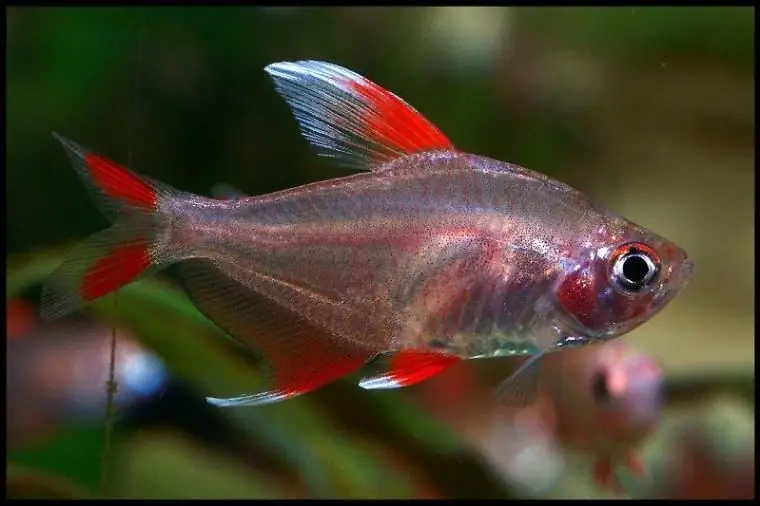
In any case, a separate aquarium is needed for the spawning of such fish. An infusion of alder cones (3-4 pieces per 1 liter) is first added to the water for such a container. Then it is defended in a dark place for a month. The temperature in the spawning area should be approximately 27 ° C. In this case, the hardness of the water should be equal to 2-5 °, and the acidity should be 6, 0-6, 8 pH.
Recommended:
Food for cockerel fish: types, choice, norm per day. Cockerel fish: care and maintenance

Cockerel is an amazing fish! Completely unpretentious in care and maintenance, the cockerel has a cool character. How to keep a fish? What kind of feeding does a cockerel require? Who can you match with? Let's figure it out together
Aquarium cleaner fish: description, features of maintenance and care, photo
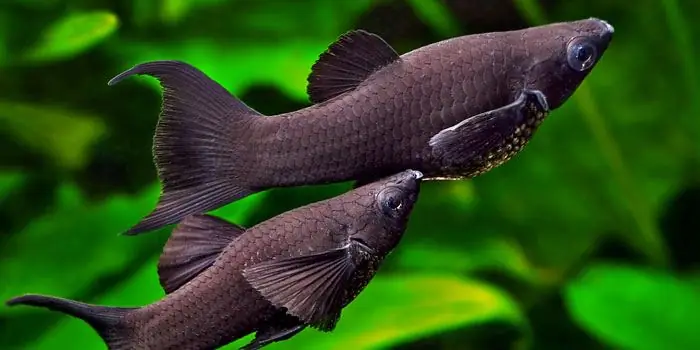
What types of aquarium fish are considered cleaners? List of the most popular fish: black mollies, guppy, catfish, girinocheilus, Siamese algae eater, swordtail and seahorse. Basic rules for their maintenance and breeding
Neon fish: care and maintenance. Aquarium neon: fish compatibility

This article aims to introduce readers to one of the most mobile species. So, neon fish. What do we know about her? Unfortunately, not so much. But in vain. This inhabitant of the underwater world is quite interesting, and you can actually talk about it indefinitely
Aquarium cockerel fish - maintenance, care and compatibility with other fish
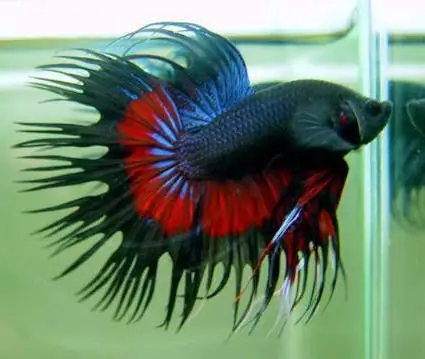
Cockerel fish, or, as it is also called, fighting fish, is a representative of the labyrinth family. Such a name for this species is not accidental. The bright color, as well as the warlike character of the "fighters" in some way resembles the same cocky and beautiful "earthly" roosters
Aquarium luminous fish: types, description, maintenance and care
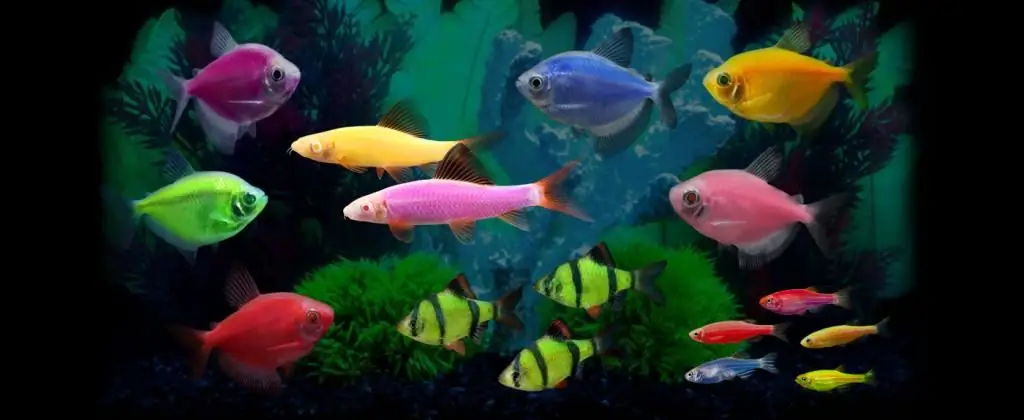
Unpretentious and colorful fish have long been decorating the homes of many aquarists fans. And no wonder, watching the underwater world calms, relieves stress and stimulates to choose new pets. More recently, fish have become popular, whose radiant coloration was created thanks to human scientific experiments. Let's try to find out which fish glow in the aquarium, why this happens and whether it is difficult to care for them

